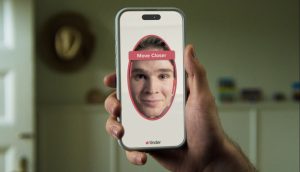Advertisers have been viewing Twitter with a greater degree of skepticism since Elon Musk completed his purchase of the social platform last year.
But a new report from Forrester finds that the amount of spending on Twitter doesn’t warrant the stress. And even though issues with the platform have been exacerbated in recent months, the research firm’s analysis shows they are not new.
Forrester based a new report on data previously compiled for three other publications: the 2022 Advertising Forecast, November’s Consumer Energy Index and its Retail Pulse Survey.
The research firm summarized its finding’s with the report’s title: “Twitter Isn’t Cancelled, It’s Downgraded.” One reason for Forrester’s conclusion is that Twitter wasn’t a huge priority for advertisers to begin with. The research found that while Twitter ranks highly on the cultural relevancy scale – for access to interest-based communities and to be a part of real-time conversations – in the overall media mix, Twitter received just 1.3% of the 2022 digital ad spend. Last year, 22% of online adults said they used Twitter weekly, compared to Facebook at 63% and Instagram at 40%.
Among those who have stopped using Twitter or plan to in the near future, Elon Musk’s ownership was the least-cited reason. At the top of the list was too much hateful content, too many bots or fake accounts and the content being too political.
Several of Twitter’s top advertisers paused buying on the platform in the wake of Musk’s takeover last year due to brand safety concerns, be it because of layoffs impacting content moderation or the reinstatement of previously banned accounts. While several other big advertisers, such as Amazon, Uber and Disney, kept advertising on the platform, a Washington Post report from December also found that ads for over 40 remaining advertisers appeared directly on the pages of white nationalist accounts that had been reinstated.
Forrester suggests the advertisers should treat Twitter as an emerging platform rather than a mature channel. Its ad experience is “unevolved” and there are real brand safety concerns, but it still offers a unique experience. Brands that do use it should do so when they could be assured it will consistently appear in content complying with safety guidelines, if the target audience spends a substantial amount of time on Twitter and if an experience based around live updates and cultural relevancy aligns with campaign goals.
For those advertisers that have pulled Twitter spending and are looking to redirect their social media investment, Forrester recommends testing and learning with other “emerging” platforms. These include TikTok – a social media “darling” for its growing audience and interest-based algorithm but with a difficult path to success without creator partnerships – and Reddit – which offers similar cultural relevancy and is making strides in its advertising and brand safety capabilities.
There are also social platforms Forrester has categorized as being useful for achieving campaign-by-campaign goals. These include LinkedIn for capturing consumers in a business mindset, Snapchat for its AR and creative resources and Pinterest for the usefullness of its “pin” ad formats in reaching users around specifics interests and occasions.























